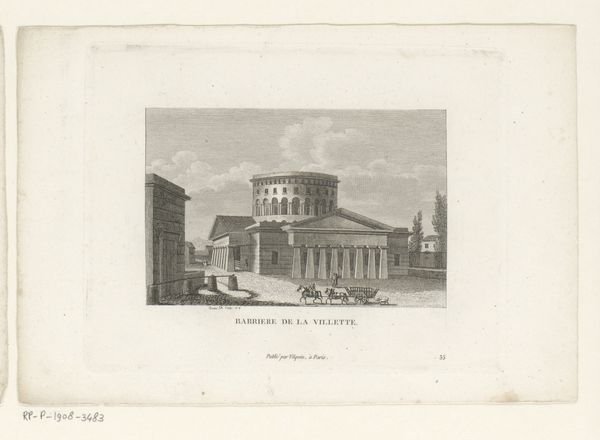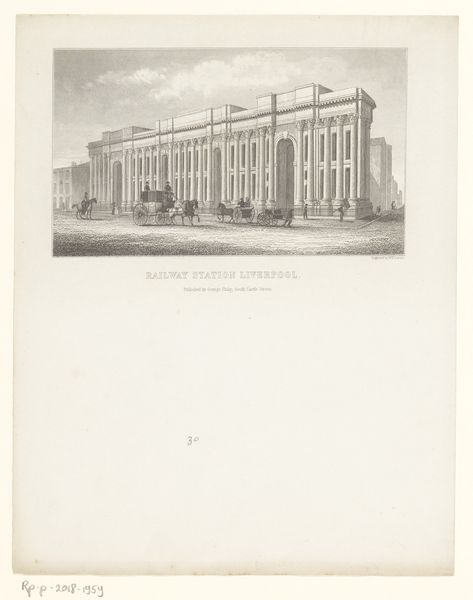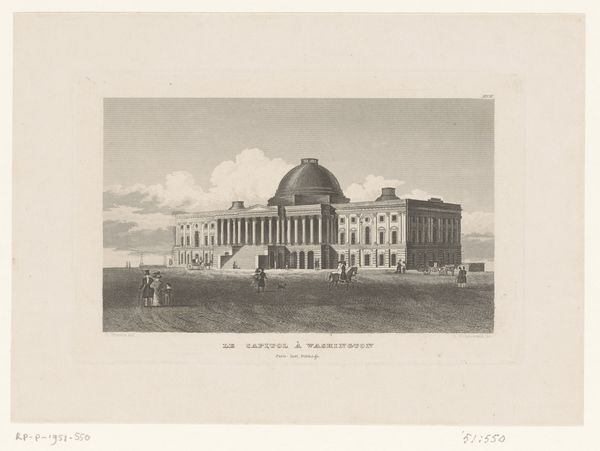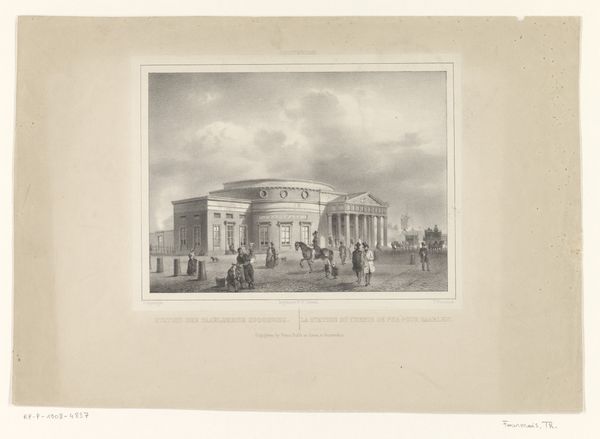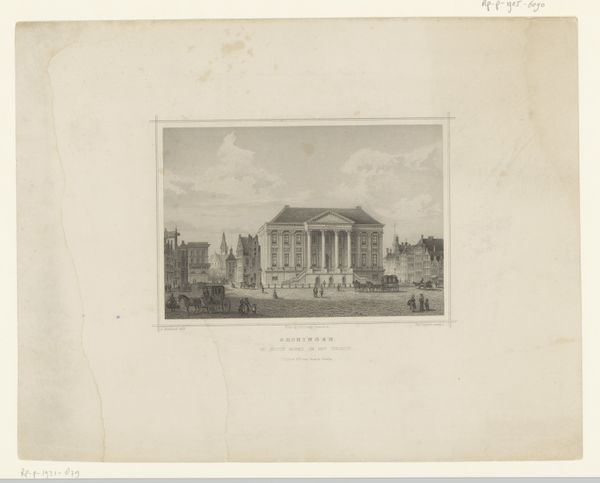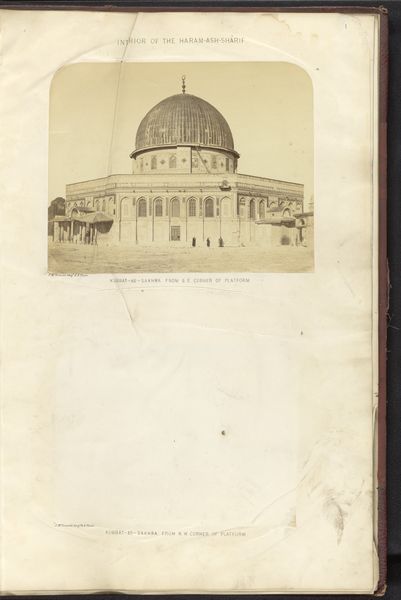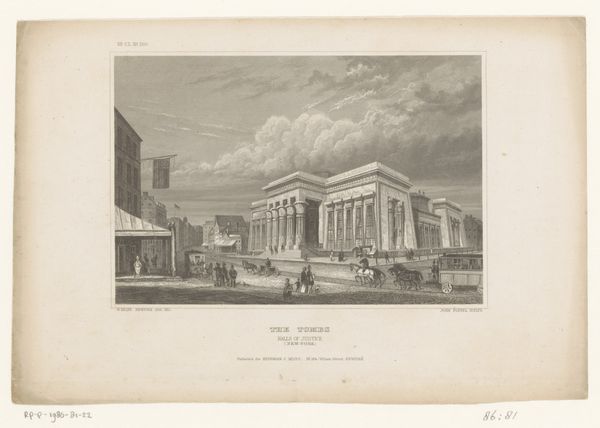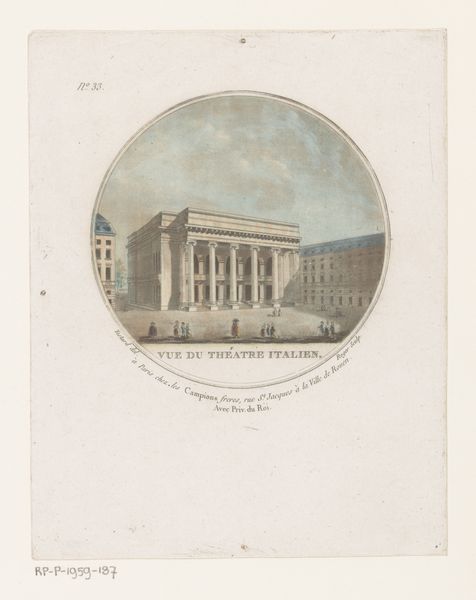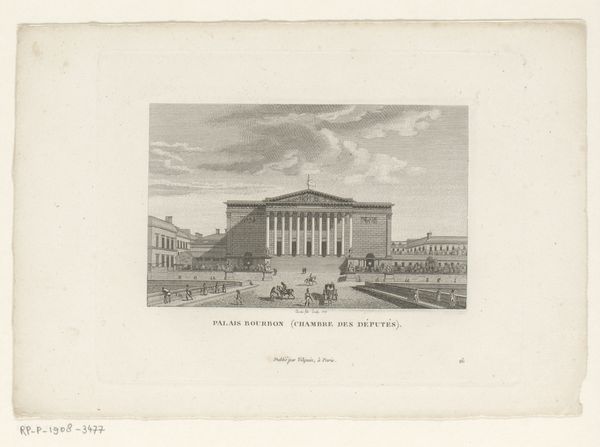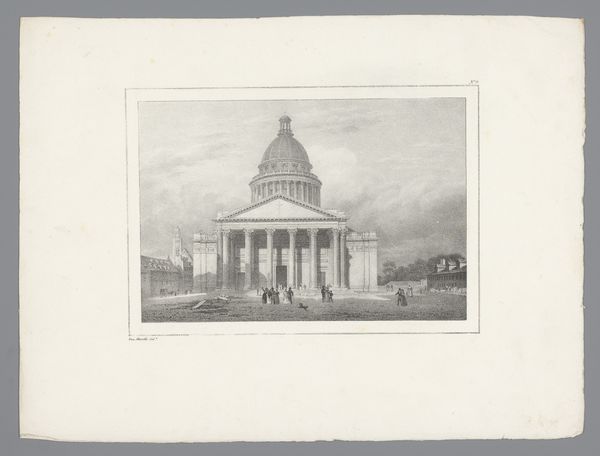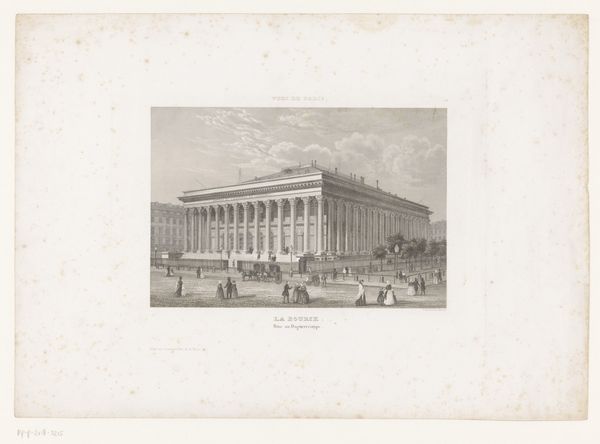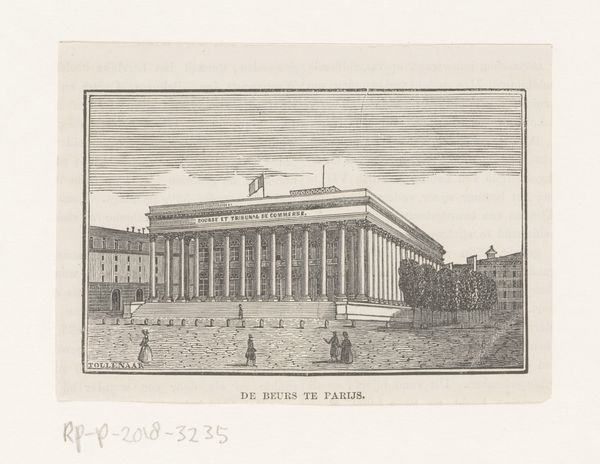
print, engraving, architecture
#
neoclacissism
# print
#
landscape
#
cityscape
#
engraving
#
architecture
Dimensions: height 236 mm, width 186 mm
Copyright: Rijks Museum: Open Domain
Curator: This engraving, entitled "Gezicht op de Revenue Buildings, te Liverpool," attributed to William Home Lizars, offers a detailed view of the Liverpool Revenue Buildings sometime between 1834 and 1848. It’s a prime example of neoclassicism within urban landscapes. Editor: My initial impression is one of austerity, almost oppressive order. The rigid lines of the architecture contrast sharply with the implied vibrancy of city life. It feels very…official. Curator: And intentionally so, I imagine. Neoclassicism in civic architecture during this period communicated power and stability, referencing the grandeur of ancient Rome. Consider the symbolism embedded in these meticulously rendered columns, the precise symmetry; it's all about projecting an image of unshakeable authority. We must remember the political and social contexts during the Victorian era in England. Editor: Exactly. It’s not merely a building; it’s a statement. What I find particularly striking is the almost complete absence of…messiness. Even the people in the foreground seem carefully placed, contributing to this sense of unwavering control. We can examine it through Foucauldian lenses. The whole design promotes discipline. Curator: That’s an interesting point. The composition certainly invites a reading related to social control. But I’m also struck by how Lizars used the medium of engraving to capture light. The gradations of grey give a sense of depth to the flat print. He must have had very thorough historical understanding of architectural styles and a solid approach towards artistic media to convey his messages successfully. Editor: But the very act of portraying these buildings with such formality underscores their role within a specific power structure, right? By focusing on that monumental, neoclassical style, the artist highlights not just architectural design but also the relationship of ordinary people within those massive power buildings, and he focuses the public role of art at that moment, but still idealizing power. Curator: Yes, there’s no denying the artwork embodies a particular viewpoint, reflective of its time. Exploring it from various critical perspectives, as we've started, lets us uncover the social and ideological forces shaping not just artistic representation but civic identity in burgeoning industrial cities such as Liverpool. Editor: Agreed. It's fascinating how a seemingly straightforward architectural rendering can become a rich tapestry of political and social commentary when viewed through different frameworks. I find it even speaks volumes about urban development. Curator: Precisely. Each approach unearths another layer, proving this piece's enduring relevance in discussions about history, art, and society. Editor: Absolutely, it provokes dialogue not only about the past but about ongoing issues of power and representation.
Comments
No comments
Be the first to comment and join the conversation on the ultimate creative platform.
